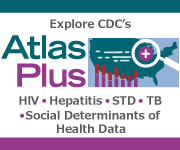TB in the United States, 2021
Tuberculosis (TB) is preventable and curable but remains one of the world’s leading infectious disease killers. The United States has one of the lowest TB disease incidence rates in the world, thanks to investments in domestic TB programs. Health departments and CDC TB control efforts prevented as many as 300,000 people from developing TB disease and averted up to $14.5 billion in costs over a 20-year period. Recent CDC data suggest that the COVID-19 pandemic has had a substantial effect on TB disease.
LATENT TB INFECTION (LTBI)
TB bacteria can live in the body without making a person sick. People with latent TB infection cannot spread TB to others. Without treatment, people with latent TB infection can develop TB disease.
TB DISEASE
When TB bacteria multiply in the body, this is called TB disease. People with TB disease become sick and can spread TB bacteria to others.
CDC data show that reported TB disease diagnoses fell 19% in 2020 and remained 12% lower in 2021 than pre-pandemic levels. These declines are most likely related to factors associated with the COVID-19 pandemic, including a combination of TB underdiagnosis as well as a true reduction in TB incidence.
Health care and public health systems must be restored and strengthened to address TB in the wake of COVID-19. We must continue to ensure correct and timely diagnoses, focus on essential TB prevention and control activities, and expand services equitably to address persistent disparities in TB. With better diagnostic tests, shorter treatments, and updated guidelines to assist healthcare providers, the nation has a greater opportunity than ever before to eliminate TB.


In the years just prior to COVID-19, TB disease diagnoses were declining between 1% and 2% each year. In 2020, with the onset of the COVID-19 pandemic, TB diagnoses dropped sharply (19%) and remained substantially lower in 2021 than before the pandemic (12% lower than 2019 levels). These declines are most likely related to a range of factors associated with the COVID-19 pandemic. For example, widespread disruptions to health care and similarities in symptoms between COVID-19 and TB may have led to delayed or missed TB diagnoses. At the same time, efforts to prevent COVID-19, such as masking and social distancing, may have resulted in a true reduction of TB incidence, as both are airborne diseases.
The latest available data on TB-related deaths also raise concerns that the COVID-19 pandemic might have had detrimental effects on TB diagnosis and disease progression, as TB deaths increased 14% in 2020, representing the first increase in deaths from this disease since 2006.
The effects of the COVID-19 pandemic on TB in the U.S. are complex and will likely persist for many years. However, CDC is committed to regaining momentum lost and working with partners to achieve TB elimination in the United States.

Drug-resistant TB is complex and costly. Multidrug-resistant TB (MDR TB) is resistant to at least two of the primary anti-TB drugs, while extensively drug-resistant TB (XDR TB) is a rare type of MDR TB resistant to the most potent TB drugs.
CDC IS COMMITTED TO MAKING TB A DISEASE OF THE PAST. Eliminating TB would protect the health of Americans and reduce costs to the health care system. Reaching the goal of elimination in the United States, defined as less than one case per one million people, requires a dual approach of maintaining and strengthening current TB control priorities while increasing efforts to test and treat latent TB infection among populations at risk.
TB elimination requires engaging partners who can identify people at risk for latent TB infection in their states and communities—and can test, diagnose, and treat them before they develop TB disease. Health care providers serving communities with populations at risk, and leaders in these communities, are crucial to the successful expansion of testing and treatment initiatives for people with latent TB infection.
If you are a member of the news media and need more information, please visit www.cy118119.com/nchhstp/newsroom or contact CDC’s Media Office at 404-639-3286 or media@cdc.gov.




